Academy Museum: Why this could be a mecca for movie fans
- Published
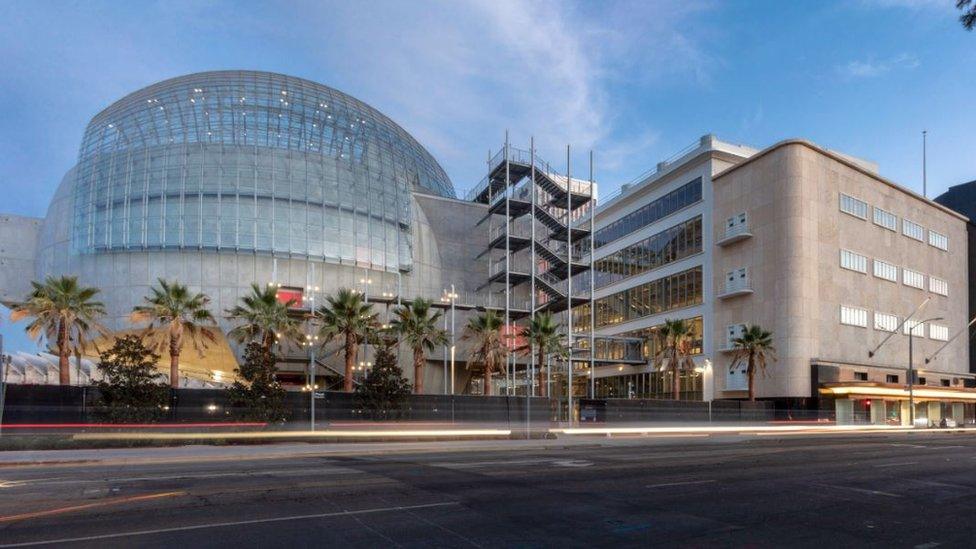
The original five-storey 1939 site now includes a new spherical building designed by Italian architect Renzo Piano
Plans for something like it have been around for decades - and Hollywood has seen several planned opening dates come and go. But in Los Angeles this September the Academy Museum of Motion Pictures is finally to open, with some online programmes kicking in next month.
So after the endless arguments over funding and design and purpose - what will visitors actually find when the doors open?
For decades, starting in 1939, what sat in Los Angeles at the junction of Wilshire and Fairfax was the May Company Building. The department store was a classic example of US "Streamline Moderne" design.
In the 1990s, the Los Angeles County Museum of Art took up residence in the building but it never found the cash to complete ambitious redevelopment.
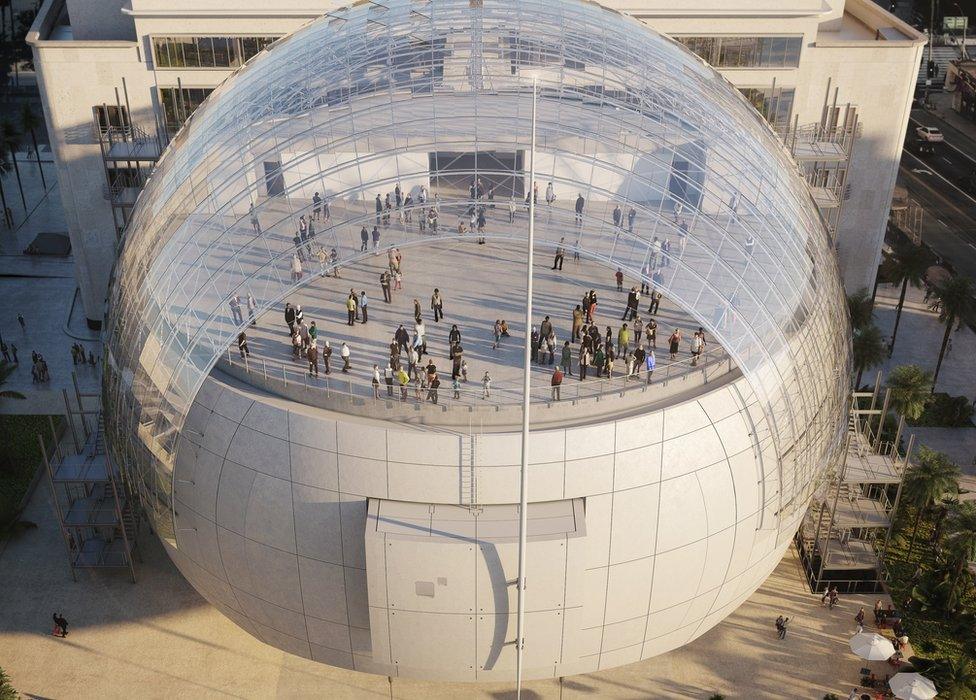
The spherical structure is impressive in its own right
Then the Academy of Motion Picture Arts and Sciences took on the site: it was the Oscar organisation's chance finally to build the big, world-class museum it has wanted almost since it began in the 1920s.
There followed the traditional unfathomable arguments about finance, design, how well the project was being led and why on earth the city needed a museum like this anyway. Covid-19 added to the delays.

Visitors will be ale to learn how James Cameron's sci-fi epic Avatar was made
In 2019, Kerry Brougher - the fine arts curator brought in to lead the museum to opening - departed. He was replaced as director by Bill Kramer.
Culture-loving Angelinos followed the crises with rapt interest. But most tourists and visitors to the city (assuming by September there are any) will have one thought: Movies are great but does that necessarily translate to a brilliant museum?
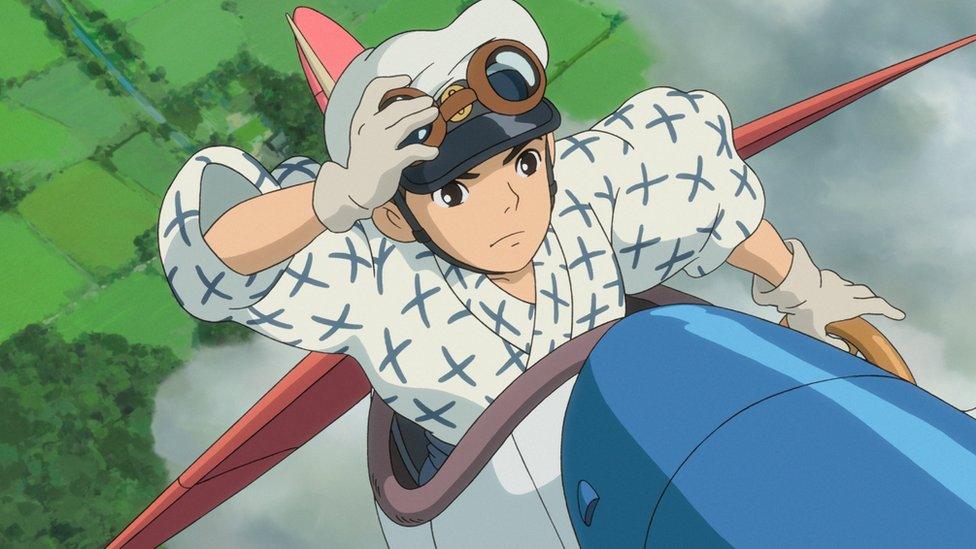
Japanese film-maker Hayao Miyazaki's work will have its own exhibition
Now journalists around the world have been given an extended virtual tour to show off the glitzy new building and explain what will be inside.
The Academy describe the museum as a two building campus. As well as the five-storey 1939 site, now totally reworked, there is an entirely new spherical building next-door designed by Italian architect Renzo Piano (co-designer of the Pompidou Centre in Paris and much else).
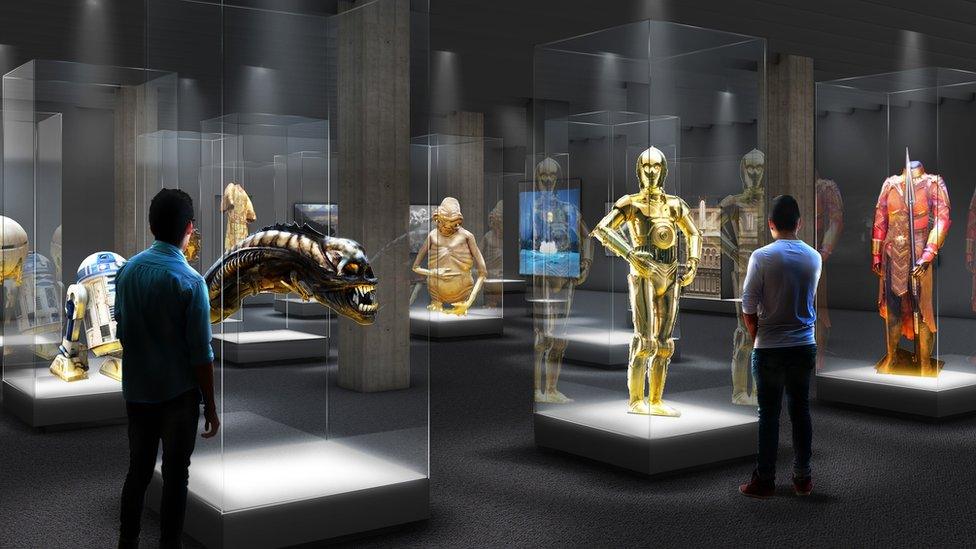
Fans of Star Wars can revel in seeing costumes and props from the film franchise
One of the great attraction draws is expected to be the attractive viewing terrace on top of the new building. Between the buildings run two bridges, one known as the Barbra Streisand Bridge.
That's far from the only star name: there's also the Debbie Reynolds Conservation Studio and a Shirley Temple Education Studio.

Dorothy's ruby slippers from The Wizard of Oz can be seen in an exhibition celebrating classic cinema
The Spielberg Family Gallery will feature a 10-minute filmed introduction to cinema and its history, featuring bits of some 700 films. Though Kramer is thought to have pushed the museum more towards temporary installations, the Spielberg Family Gallery will be part of the longer-term offering.
There will be two cinemas - a 1,000 seater and a compact 288-seat venue - with several screenings daily. The bigger cinema has space for a large orchestra but it's far too small ever to hold the Oscars ceremony there.
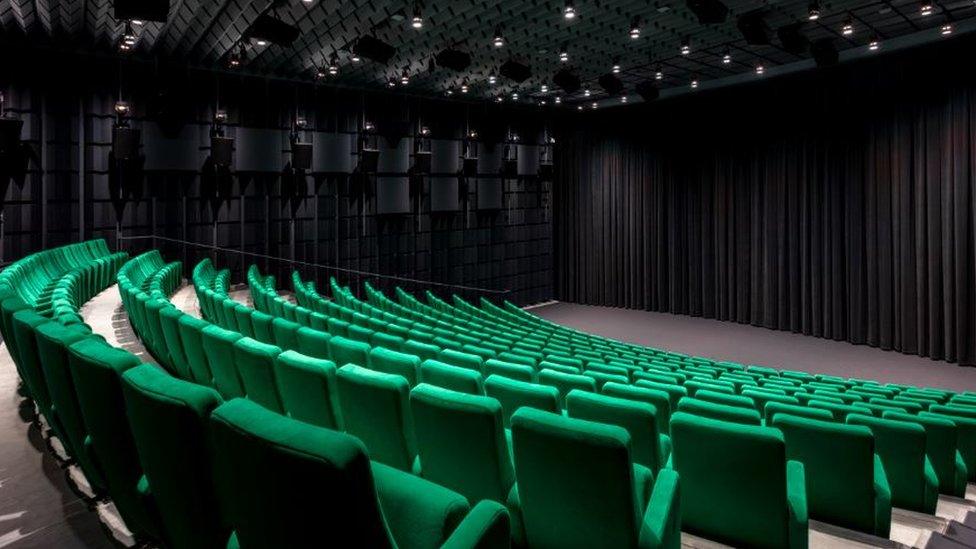
One of the obvious key notes is an attention to diversity, both in today's cinema and over the past century. The museum says it's going to celebrate film but also explore "less proud moments in the histories of the Academy and the film industry".
Those whose work will be celebrated when the museum opens include well-known names such as Bruce Lee, Orson Welles and film editor Thelma Schoonmaker. But also featured will be Oscar Micheaux (born 1884), less familiar to the public but one of the first African Americans to make an impression as a film producer and director.
Some of the galleries will celebrate particular aspects of movie-making - from production design and casting to make-up and sound mixing.
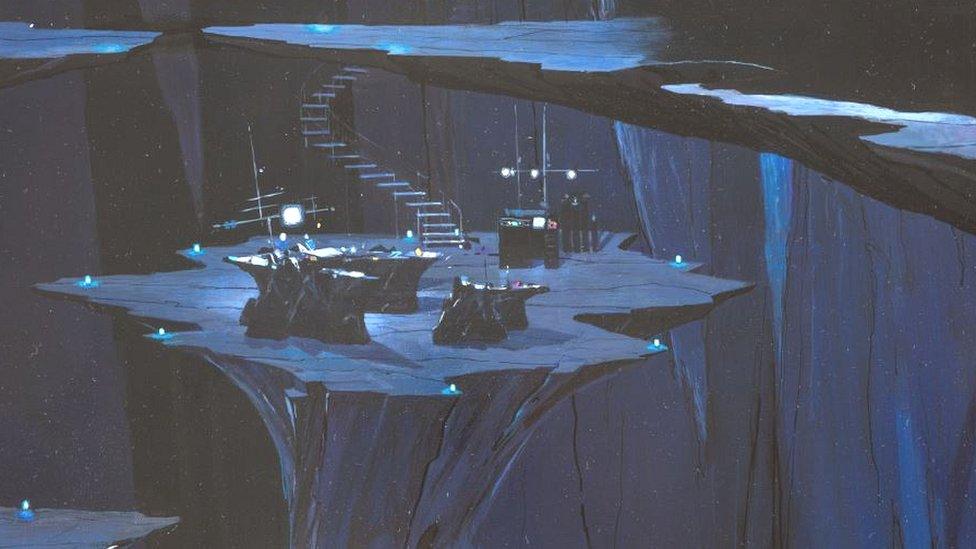
The Batcave from Batman Returns
That may suggest the parts of Oscar Night which tend to get short shrift from the media. But the Academy also promises it won't dodge heavy political issues such as the decades-long under-representation of women and ethnic minorities and the #OscarsSoWhite campaign which began in 2015.
The museum is trying to give the broadest possible picture of movie history. To open in September there will be an exhibition devoted to the 1939 classic The Wizard of Oz and others on the work of Spain's Pedro Almodovar and of Japanese film-maker Hayao Miyazaki.
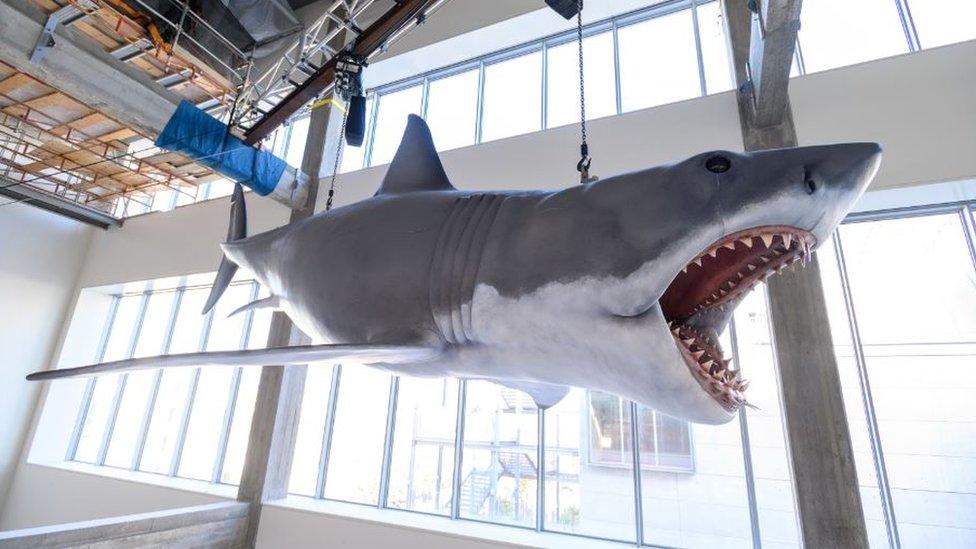
Bruce the Shark from Jaws
One popular feature is bound to be the Virtual Reality exhibit which allows you to pick up an Academy Award on the stage of the Dolby Theatre (in your dreams).
For the moment the impressive list of what the Academy Museum of Motion Pictures will feature when it opens in September is just that - a list. It's hard to get a sense of what a visit will feel like.
But the Academy has persisted through plenty of squabbles and tricky times to get to this point - with Covid-19 thrown in latterly to make things even tougher. Despite the problems along the way there's a will in Hollywood to make the new museum work.

Follow us on Facebook, external or on Twitter @BBCNewsEnts, external. If you have a story suggestion email entertainment.news@bbc.co.uk, external.